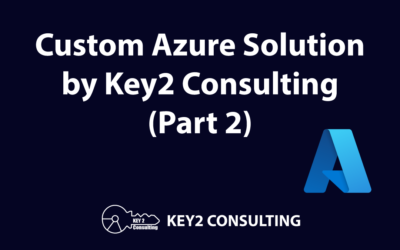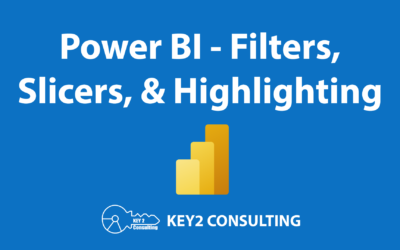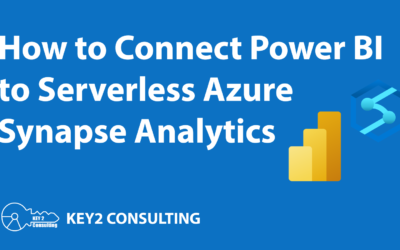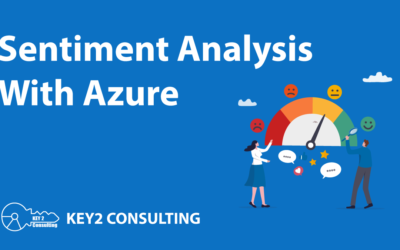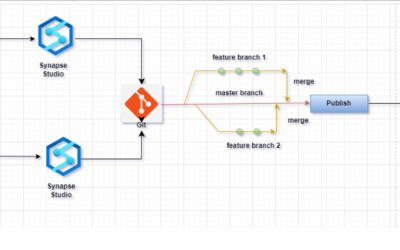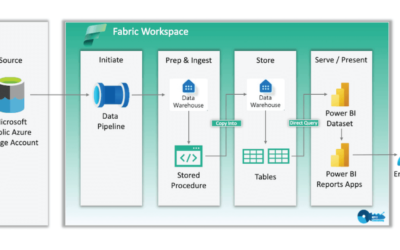Expert Azure Data Lake Consulting Services
Azure Data Lake can be an invaluable tool for your organization when optimized. We can help you do so with our Azure Data Lake consulting services and solutions.

What is Azure Data Lake?
Azure Data Lake Storage Gen 2 (ADLS) is a foundation for big data analytics and modern data warehouses centered around enterprise-level, cloud-based data lakes.
The cloud platform supports file-system constructs – such as nested directory structure – for easy file access during data reads and writes. This is made possible by a feature called, “hierarchical namespace”.
ADLS delivers file-level security combined with blob storage to provide a low-cost and highly-scalable storage. Storage accounts are replicated to ensure high availability and resiliency.
Azure Data Lake Storage also offers a massively scalable storage platform that supports analytics in Databricks, Synapse Analytics, Azure ML, Power BI, and more, and it accepts endless data formats. There is no limit to the size of the storage accounts, individual files, or the total amount of data stored in the data lake.
Lastly, the enterprise data lake cloud solution provides strong security features. Data in ADLS is encrypted and authentication is managed through Azure Active Directory (Azure AD) and Role-Based Access Control (RBAC).
How We Can Help You Maximize Azure Data Lake Storage
Key2 Consulting has helped many organizations optimally implement data lakes and lakehouses using ADLS Gen2 by leveraging our big data analytics methodology.
Our team has engaged with small and mid-sized businesses, as well as large enterprises, in both the public and private sectors. We have delivered ADLS solutions for organizations spanning a variety of industries including: healthcare, logistics, retail, financial services, and more.
We can help you navigate the Azure pricing model and advise you on what best fits your specific needs.
Our Methodology
One of the pillars of our methodology is the medallion architecture (coined by Databricks) which consists of 3 distinct zones:
- Bronze – The Bronze Zone contains the raw, unprocessed data pulled from the source that is ideally appended incrementally and expected to grow over time. This might be data that is extracted in batches or streamed in a real-time, or near real-time, fashion.
- Silver – As data moves into the Silver Zone, rules such as removal of duplicates and filtering are applied. This data enrichment makes the Silver Zone an area of interest to data scientists and self-service analytics. Data is cleansed but not yet conformed to a dimensional model.
- Gold – Once data reaches the Gold Zone, it has been refined with business rules applied and usually aggregated to support analytics, machine learning, and other enterprise applications. Key2 relies on dimensional models with conformed dimensions so that joins to measures can be made easily and reporting in tools such as Power BI is efficient and expedient.
Bringing It All Together
Using the medallion architecture, our company has implemented ELT to mine, cleanse, conform, and enrich data using related services such as Azure Data Factory (ADF) and Databricks.
Self-service analytics and machine learning can access data stored in the silver layer while enterprise reporting in Power BI utilizes data stored in the gold layer.
The beauty of the lakehouse design is that it meshes the key components of data lakes and data warehouses and opens doors to all levels of users within an organization.
Ready to maximize Azure Data Lake? Contact us today.
Our company is a Microsoft Gold-Certified Partner with years of Azure consulting experience. We can help you get the most out of ADLS.
See Our Latest Azure Content
Protected: Our End-to-End Custom Azure Solution – Part 2
There is no excerpt because this is a protected post.
Understanding Power BI Filters, Slicers, & Highlighting
We explore three highly useful Power BI features that enhance data analysis: highlighting, filtering, and slicing.
How to Connect Power BI to Serverless Azure Synapse Analytics
Here’s a solution we created for accessing Azure Data Lake Storage Gen 2 data from Power BI using Azure Synapse Analytics.
How to Use Azure AI Language for Sentiment Analysis
Learn about sentiment analysis in Azure, including how to leverage Azure AI Language services to conduct it.
GitHub Source Control Integration with Azure Synapse Workspace
GitHub source control integration with Azure Synapse workspace allows data professionals to manage scripts, notebooks, and pipelines in a version-controlled environment.
Microsoft Fabric: A Deep Dive into Data Warehouses
We share the details of our experience with creating an end-to-end Data Warehouse solution in Microsoft Fabric.

Key2 Consulting | [email protected] | (678) 835-8539
